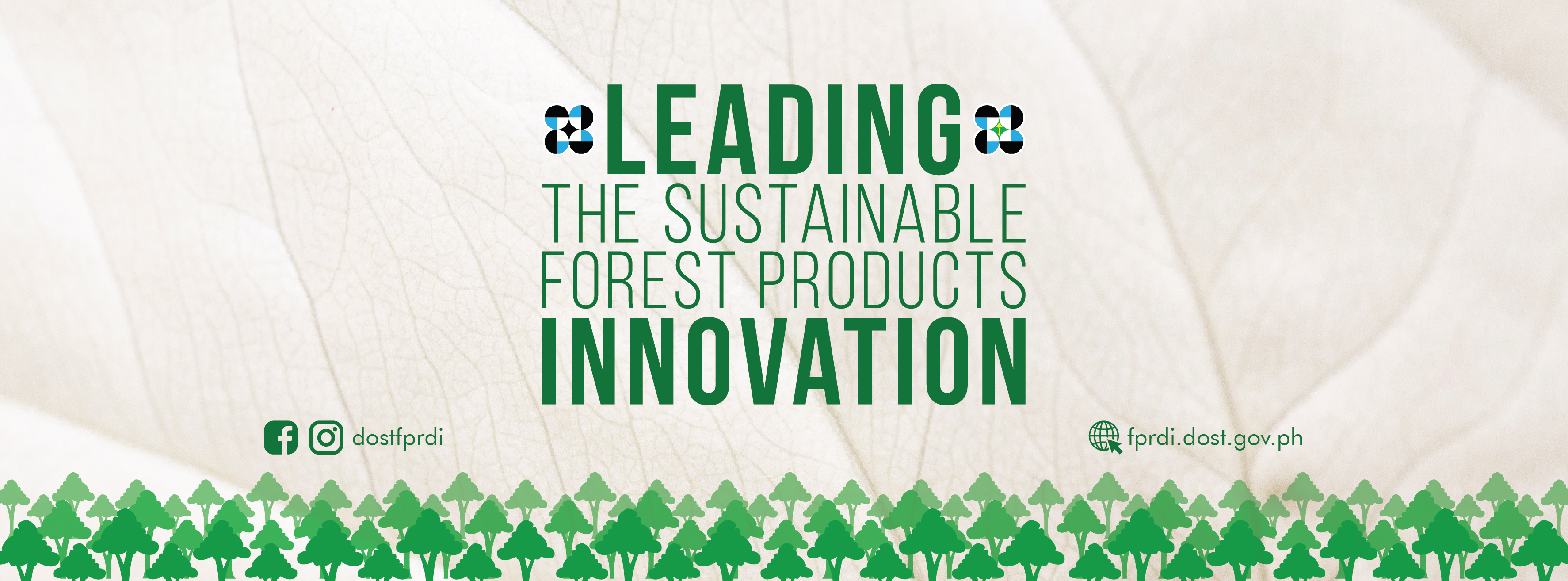Program 10. Human Security and Defense R&D
- Details
LEADER: Ms. Mildred M. Fidel
BACKGROUND
Insurgency and terrorism are the pressing problems that the country faces at present. In trying to overcome this problem the government revitalizes the DND’s SRDP (Department of National Defense’ Self-Reliant Defense Posture) Program a.k.a Self-Reliant Defense Capability Program. The main thrust is to be self-sufficient in basic military requirements by manufacturing our weapons, small arms and ammunitions, tactical communications equipment, basic land vehicles and small sea crafts, among others.
The threats posed by Islamic extremists and communist rebels prompted President Duterte to increase the DND budget to 140 billion pesos to enhance the AFP and PNP’s capability in 2018. Of the amount, P25 billion will be allocated to finance the SRDP Program to fund the purchase of weapons and armaments, among others. He has promised to provide everything the military needs to fight terrorism and insurgency as well as illegal drugs. Accordingly, the government could not achieve its development targets without paying attention to the country’s internal security and public order.
The DND Government Arsenal, mandated by law to manufacture our military requirements on weapons and armaments, has modernization program which is being implemented in four phases.
Phase I focuses on the upgrading of the Arsenal’s antiquated production capabilities, particularly supply of equipment and technology to upgrade existing lines to establish a dedicated line for the manufacture of 5.56mm M193 and SS-109 ammunition. The circular of requirements has been approved. Its implementation is estimated to cost more than half a billion pesos.
Phase 2 aims to provide the Philippines its first local source of military nitrocellulose, the raw material for producing propellant powder.
Phase 3 seeks to establish a capability for in-country production of brass and commercial bronze for ammunition-case manufacture, with incidental capacity to produce coin blanks for the Bangko Sentral ng Pilipinas and other industrial/commercial users.
And, Phase 4 aims to establish an in-country capability for the production of various types of propellant powder for small and medium-caliber ammunition.
FPRDI’s R & D support will focus on Phases 2 and 4 of the DND Arsenal’s modernization plan. FPRDI will develop technologies on propellants and bullet-proof vests using local materials. It will generate appropriate technologies and technical information, products and services to fully utilize our natural resources as source of the country’s defense needs.
The program’s R and D on bullet-proof vests will utilize bamboo and abaca to convert these sustainable and eco-efficient resources as affordable alternatives to imported ballistic vests. On propellants, the project will develop military grade cellulose nitrate powders from abaca pulp and tri-nitro-resorcinol from locally-available sources of phenolic compounds. Finding local substitutes to imported gums and resins as important ingredients of propellants will also be covered in the program.
The significant R & D outputs of the program will be pursued to the piloting of the production process to assess the technical and financial viability, as well as, the environmental and social aspects of the technologies. This component will involve design and fabrication of process equipment and facilities that would meet the targeted outputs in pilot-scale operation, including the commissioning and installation of the said equipment and their accessories.
The success of FPRDI’s program, however, will only be realized when implemented in partnership with DND Government Arsenal.
GOAL
Develop and transfer technologies on producing military grades propellants and bullet-proof vest from local sources.
OBJECTIVES
- Produce dissolving pulp with high alpha cellulose from abaca.
- Determine the production conditions that are feasible in producing high alpha cellulose from abaca dissolving pulp.
- Develop bullet-proof vests from abaca nano-cellulose and bamboo.
- Design, evaluate and fabricate prototype bullet-proof vests.
- Determine cost of production.
Program 9. Nanocellulose Technology
- Details
LEADER: Engr. Anniver Ryan P. Lapuz
BACKGROUND
Nanocellulose, variously termed as nanocrystals, whiskers, rods, nanofibrils or nanofibers, are cellulose fibrils or crystals that has at least one dimension within the nanometer size range. It is an emerging nanomaterial that is produced either from bottom-up approach via biosynthesis or top-down approach thru disintegration of plant materials. In bottom up approach, synthesis of nanocellulose fibers are produced by algae, bacteria and tunicates. Whereas top-down approach is a degradation method involving mechanical and chemical treatment to extract the nanocellulose fibers from the bulk lignocellulosic material. These lignocellulosic materials or plant materials are the most abundant resource in the world and could come from wood and non-wood forest products. The logging wastes and residues alone in our country were estimated to reach about 192 cu. m. (Philippines Forestry Statistics, 2013). In addition, we also have abundant agricultural crops and residues from abaca, banana, rice straw, bagasse and other annual fiber crops which are sustainable raw materials for nanocellulose production.
The characteristics of nanocellulose depend on the plant material and extraction method used. Generally, nanocellulose is biodegradable, less expensive to produce and has a wide range of applications due to its exceptional strength characteristic, light weight, transparency, high flexibility, good electrical and thermal properties and excellent biocompatibility. It is also often regarded as an ideal reinforcement for green composites and biocomposites application.
Some application areas for nanocellulose include paper, paperboard and packaging where nanocellulose enhances the fiber-fiber bond strength and has a reinforcement effect on paper materials. In food industry, nanocellulose is used as form emulsions and dispersions and is suitable for use in food products as thickeners or stabilizers. Nanocellulose also has good absorption properties and can be used in medical and hygiene products like tissues, non-woven products, or diapers. It also has applications in films, painting, cosmetics, automotive, potential military applications such as its incorporation in ballistic materials and protective equipment.
Program 8. Gums, Resins, Oil and other Exudates
- Details
LEADER: For. Florena B. Samiano
BACKGROUND
The Philippine forests, both natural and plantation-based, inhabit a large number of extractives producing plants and these have been sources of important livelihood opportunity for people in areas where these species abound. Gums, resins, oils and other extractives are just among the many non-timber forest products listed to have commercial importance and have wide range of potential uses and by-products for industrial chemicals, bio-chemicals and pharmaceuticals.
Gums. Plant gums are solids, consisting of mixtures of polysaccharides (carbohydrates) which are either water-soluble or absorbs water and swell up to form a gel or jelly when placed in water. They are insoluble in oils or organic solvents such as hydrocarbons, ether and alcohol. The wide variety of gums with commercial importance include gum Arabic, ghatti gum, karaya gum and tragacanth gum. In the Philippines, there are few plant species producing gums such as narra (Pterocarpus indicus), a source of kino, a red gum-type used in folk remedies for tumors; acacia (Samanea saman), the bark is an abundant source of gums and resins used as gum Arabic for gluing; and ipil-ipil (Leucaena leucocephala), barks and seeds are reported to yield gums.
Resins. Resins are solid or semi-solid amorphous materials that are formed in plant secretions and are insoluble in water but soluble in certain organic solvents. The substance is usually either transparent or translucent and is yellowish to brownish in color. It is composed of complex mixture of organic compounds called terpenes. Based on its major properties, resins are classified into three sub-groups: hard, soft and fluid resins.
Hard resins are usually soluble in a number of organic solvents, such as alcohol, ether and hexanes, yet are insoluble in water. There are two kinds of hard resins, copals and damars. In the Philippines, only copals from almaciga (Agathis philippinensis) are being harvested.
The term elemi has been applied in the past to a large number of oleoresins from a variety of geographic and botanical sources. Nowadays, however, the term is almost always used to describe the product from the Philippines, Manila elemi, which is the only one traded internationally. Manila elemi is a soft, fragrant resin obtained from the trunk of Canarium species. In the Philippines, there are three Canarium species known as source of Manila elemi namely Canarium ovatum, C. luzonicum, and C. asperum. Fluid resins have same properties with hard and soft resins, but contains higher percentage of oil. Pine oleoresins and balau resins from dipterocarps are known to have high content of volatile oils. Unlike the other resins where the abundant sources are usually from barks, balau are obtained from the wood part and pine oleoresins are sources both from barks and woods.
Oils. An essential oil is a concentrated hydrophobic liquid containing volatile aroma compounds from plants. Essential oils are also known as volatile oils, ethereal oils, aetherolea, or simply as the oil of the plant from which they are extracted, such as oil of cinnamon. Oils are extracted from the flowers, seeds, leaves, stems, bark, trunk and roots of various plants through: cold pressing, steam distillation or solvent extraction.
Oils have multiple commercial significance that can be categorized into food (flavours and spices), aromatics (fragrance, cosmetics), industrial chemical and biochemical (non-edible fats and oils, naval stores) and pharmaceuticals.
Other Extractives. Dyes, tannins and latex are other forms of extractives that can be sourced from different parts of plants and trees.
Dyes. As cited by Razal and Palijon (2009), Ella (1995) identified 65 plant species in the Philippines, representing 55 genera and 40 families that yield natural dyes. The most popular and extensively used dye-producing plants in seven regions of the country that were surveyed were: achuete (Bixa arellana), antipolo (Artocarpus blancoi), bangkoro (Morinda citrifolia), bayok (Pteropermum diversifolium), ipil (Intsia bijuga), kamachile (Pithecelobium dulce), narra, sibukaw (Caesalpinia sappan), tayum (Indigofera tinctoriai), tuai (Bischofia javanica) and luyang dilaw (Curcuma longa). On the other hand, Fernandez (1999) indicated other list of potential species as sources of natural dyes: anonang (Cordia dichotoma), balinghasai (Buchanania arborescens), bulo-bulo (Melicope latifolia), katmo (Vaccinium whitfordii), ipil-ipil and salago (Wikstroemia lanceolata).
Tannins. Tannins are water-extractable materials from certain plants that convert animal hide into leather. They are complex polyhydric phenols made soluble in water by their high degree of hydroxylation (Razal and Palijon 2006). In the Philippines, those forest plants growing in mangrove swamps had served as sources of tannins, especially the bark of mangrove species. Among these include: busain (Bruguiera gymnorhiza), banato, (Mallotus philippensis), kamachile, siar (Peltophorum pterocarpum) and tangal (Ceriops tagal).
Latex. Latex is a fluid, usually milky white in color, which contains tiny droplets of organic matter suspended or dispersed in aqueous medium. Latex-producing plants are usually restricted to a relatively small number of families, including Apocynaceae, Euphorbiaceae and Sapotaceae. The most well-known example is rubber latex, in which the solids content is over 50% of the weight of the latex (PROSEA, 2000). The solids can normally be coagulated to form a solid mass by boiling the latex. The principal components of the coagulum are cis or trans polyisoprenes and resinous materials. If the polyisoprene is mainly cis, it confers elasticity to solid and makes it rubber-like; if it is mainly trans, the solid is non-elastic and gutta-like (Coppen, 1995). Aside from using it for rubber manufacturing, some plants producing latex have potential uses as adhesives, chewing gums and with medicinal properties that cure certain illnesses such as swelling, snake bites, among others.
In the next 5 years, this program targets to implement projects and researches on piloting/ scaling up technologies on harvesting, processing and utilization of GROE forest resources.
PROGRAM OBJECTIVE: To develop protocols and technologies for sustainable harvesting, extraction, processing and utilization of GROE forest resources.
Subprogram 1: Conservation and sustainable management of selected timber and nontimber sources of GROE.
Outcome: Recommended policy guidelines and protocols for the propagation and sustainable harvesting of GROE from selected timber and non-timber species.
Subprogram 2: Extraction, characterization and utilization of selected GROE.
Outcome: Developed technologies and by-products of GROE that can be piloted for adoption and/or commercialization.
Subprogram 3: Socio-economic studies and technology transfer/commercialization of GROE products.
Outcome: Assessed and documented piloting/commercialization of GROE technologies and products; and protected and disseminated GROE products and technologies.











